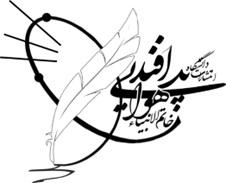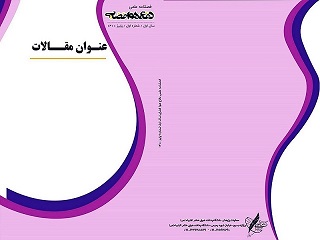نوع مقاله : مقاله پژوهشی
نویسندگان
1 دانشجوی کارشناسی ارشد،بهداشت پرتوها،دانشکده بهداشت،دانشگاه علوم پزشکی شهید صدوقی یزد،یزد ایران
2 کارشناس ارشدژئوفیزیک،دانشگاه صنعتی شاهرود،،شاهرود،ایران
چکیده
این تحقیق به بررسی میزان انتشارآلایندههای پرتوزاودوز دریافتی ناشی از انفجار بمب هستهای فرضی در مرکز ایران با HYSPLITوداده های GDASمیپردازد. نتایج نشان دادجهت انتشار ورسوب هستههای پرتوزا بهطور عمده شمال شرقی و مقدارکمی جنوب شرقی محل انفجار است و گسترش مواد پرتوزا 12 ساعت پس انفجارحدود 300 کیلومتر ازمحل انفجارمیرسد واستان یزد ونواحی جنوبی خراسان جنوبی و شمال استان کرمان درگیرخواهند شد . همچنین، انتشار و رسوب ذرات و توزیع دوز به شدت به شرایط آب و هوایی منطقه وابسته است .درابتداتوده بشدت رشدکرده وتاارتفاع 5000مترمیرسد. با گذشت زمان، ارتفاع ذرات کاهش یافته و بیشتر رسوب میکنندومقدار بیشینه غلظت رسوب ذرات بیشتر از مقدار غلظت انتشار آنها است و بیشینه غلظت و رسوب ذرات در مناطق شمال شرقی محل انفجارحدود 200 کیلومتر از آن است جایی که دوز دریافتی انسانها به بیش از100 میلیسیورت رسیده است .همچنین، میزان دوز کل دریافتی افراد بر روی سطح زمین بیشتر از دوز کل دریافتی در ارتفاع 0 تا 100 متر است. با گذشت زمان، غلظت ابر اتمی کاهش یافته و در نتیجه دوز دریافتی افراد نیز کاهش مییابد. میزان دوز دریافتی افراد اکثرابسیار بیشتر از حد مجاز تعیین شده توسط کمیسیون بینالمللی حفاظت در برابر اشعه (ICRP) میباشد. از نظر پرتوزایی، تعداد کمی از مناطق جزو ناحیه کنترل شده و اکثراجزو ناحیه ممنوعه به دست آمدند این تحقیق بر اهمیت پیشبینی و مدلسازی نحوه انتشار آلایندههای پرتوزا تأکید دارد و نشان میدهد که شرایط جوی لحظهای تأثیر زیادی بر دقت پیشبینیها دارد
کلیدواژهها
موضوعات
عنوان مقاله [English]
Investigating the amount of atmospheric transmission and distribution and deposition of radioactive pollutants in the radioactive waste cloud and the dose received by humans due to the nuclear bomb explosion in the central part of Iran.
نویسندگان [English]
- Zahra Dehghan bahabadi 1
- Saeed Ghorbani Sehat 2
1 Master's student, Radiation Health, Faculty of Health, Shahid Sadoughi University of Medical Sciences
2 Master's degree in Geophysics, Shahrood University of Technology, Shahrood
چکیده [English]
examines the extent of radioactive pollutant dispersion and radiation dose received due to hypothetical nuclear bomb explosion in central Iran using HYSPLIT and GDAS data, without considering chemical reactions. results indicate that the predominant direction of radioactive fallout is northeast, with a minor amount towards southeast of explosion site. The spread of radioactive materials reaches approximately 300 kilometers from the explosion site within 12 hours, affecting Yazd province, southern regions of South Khorasan, and northern Kerman province. Additionally, dispersion and deposition of particles, as well as dose distribution, are highly dependent on local meteorological conditions. Initially, cloud grows significantly and reaches an altitude of 5,000 meters. Over time, particles settle over time , leading to greater deposition. peak concentration of deposited particles exceeds concentration of those dispersed, with maximum concentration and deposition occurring in northeastern area about 200 kilometers from explosion site, where radiation dose received by individuals exceeds 100 millisieverts. Furthermore, the total dose received by individuals on ground at 0 meter is higher than total dose received at altitudes of 0 to 100 meters. As time passes, density of radioactive cloud decreases, subsequently reducing radiation dose received by individuals. doses received by most individuals are significantly above permissible limits set by International Commission on Radiological Protection (ICRP). In terms of radioactivity, very few areas fall within the controlled zone, while most are classified as prohibited zones. emphasizes the importance of predicting and modeling dispersion of radioactive pollutants and demonstrates that instantaneous atmospheric conditions greatly influence accuracy of predictions.
کلیدواژهها [English]
- HYSPLIT
- آلاینده های هسته ای
- پخش جوی
- بمب اتمی

